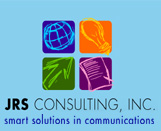


 |
||||
| PRINTER FRIENDLY VERSION
Jenny Schade's Five Tips (and One Caution) for Conveying Authenticity in Your Communications Are you looking to increase engagement amongst your employees and customers? To advance your career in this uncertain economy? Try being less professional and more personal. I've noticed an interesting phenomenon in my coaching and consulting work: The more technology allows us to work efficiently, create a sophisticated "look," and reach large audiences in our interactions, the more we stand out in the crowd and attract others when we reach out with simple messaging and personal appeal. While technology — group emails, mass voicemails, and tweets — has certainly enabled us to quickly blast out information professionally and efficiently, we actually make a more meaningful connection when we come across as a person interested in our audience. I'm calling this the "Allure of Authenticity," and the premise is simple: You get peoples' attention and encourage them to listen and share information in return if they feel you are genuinely interested in them. The following are Jenny Schade's Five Tips (and One Caution) for Conveying Authenticity in Your Communications: 1. Keep it simple and straightforward. I received the following email from my new department chair at Columbia College, where I teach Introduction to Marketing: "I assume you heard that I'm going to be carrying out the program coordinator's job, starting Fall 2011. I'd like to meet with Marketing Studies faculty before we scatter away in summer. How's your schedule for next two weeks? Would you please let me know when is good for you? I will clear my schedule. Thanks and looking forward to our gathering." This simple message told me two important things: One, this leader is interested in connecting with me. Two, in fact she's so interested in my input that she's clearing her calendar to make that happen. I was happy to find time on my own calendar to meet with her and listen to her goals for the department. 2. Throw out your script. A Fortune 500 division leader retained my company to determine why she wasn't connecting with employees, despite the fact that she provided regularly recorded voicemails and videos with company updates. "I listen to her messages, but that's not the person I know," explained an employee. "It sounds like she's reading." We worked with this company leader to speak from talking points, ensuring she delivered her messages in her own spontaneous style. Employees responded enthusiastically to her more genuine approach, which she continues to deliver in her new role as company president. 3. Come across as a person, with quirks and foibles like the rest of us. If you want people to remember you and feel comfortable telling you critical information, let them see your human side. Tell them an anecdote about a mistake you made, how you learned something new or when you struggled with a change. Nothing gets people to open up more than knowing they are safe to do so because you're a person just like them. At a client engagement recently, I was introduced to a new member of the Marketing Leadership Team. This new leader has been charged with building a new department and I think it's likely she'll succeed. Why? While she clearly talked about her area of expertise and provided input, she also described the challenges of moving across the country with young children and finding a new nanny. "Isn't she great?" my client asked me later. "She's a real person — genuine. I want to work for her." 4. Don't hesitate to say when you don't know or don't understand. A pharmaceutical company CEO who had the best relationships with employees I've ever seen used to say when he didn't understand something, "I'm just not very bright. I'm not getting this. Can you explain it again?" This CEO graduated summa cum laude with a bachelor's degree in mathematics and economics and received an MBA degree in finance and accounting from Northwestern University's Kellogg School of Management. He is obviously no dummy. But he avoided intimidating his people when he didn't understand something. He didn't mind saying when he didn't understand or know the answer. His intensely loyal staff made certain that didn't happen very often. 5. Make it personal. The most successful marketing piece I've produced in my 18 years in business was a one-page showcase of press coverage I received that highlighted my interviews with national media. But what really made the effort successful was that I wrote a personal note on every piece I mailed to clients. I also skipped the efficiency of electronic distribution and used the U.S. Mail to share my good news. My "snail mail" stood out amidst the average 228 corporate emails received per day. I was really struck at the personal notes and calls — and ultimately business — that I received as a result of that mailing. CAUTION: Being authentic doesn't mean being rude. Profanity has no place at work: The attention you gain by blogging or tweeting out expletives is the wrong kind of attention. Your mother was right. Don't say those words — especially at the office. You might make some heads turn initially, but you're never going to increase engagement by swearing or telling off-color stories. (For an example, google "Charlie Sheen.") In summary, if you want to engage your audience, help them to see the person behind the message. Authentic communication is the key to making a genuine connection. NEXT ARTICLEJenny Schade is president of JRS Consulting, Inc., a firm that helps organizations build leading brands and efficiently attract and motivate employees and customers. Subscribe to the free JRS newsletter on www.jrsconsulting.net/newsletter.html © JRS Consulting, Inc. 2011 |
 |
|||
© 2008 JRS Consulting, Inc.